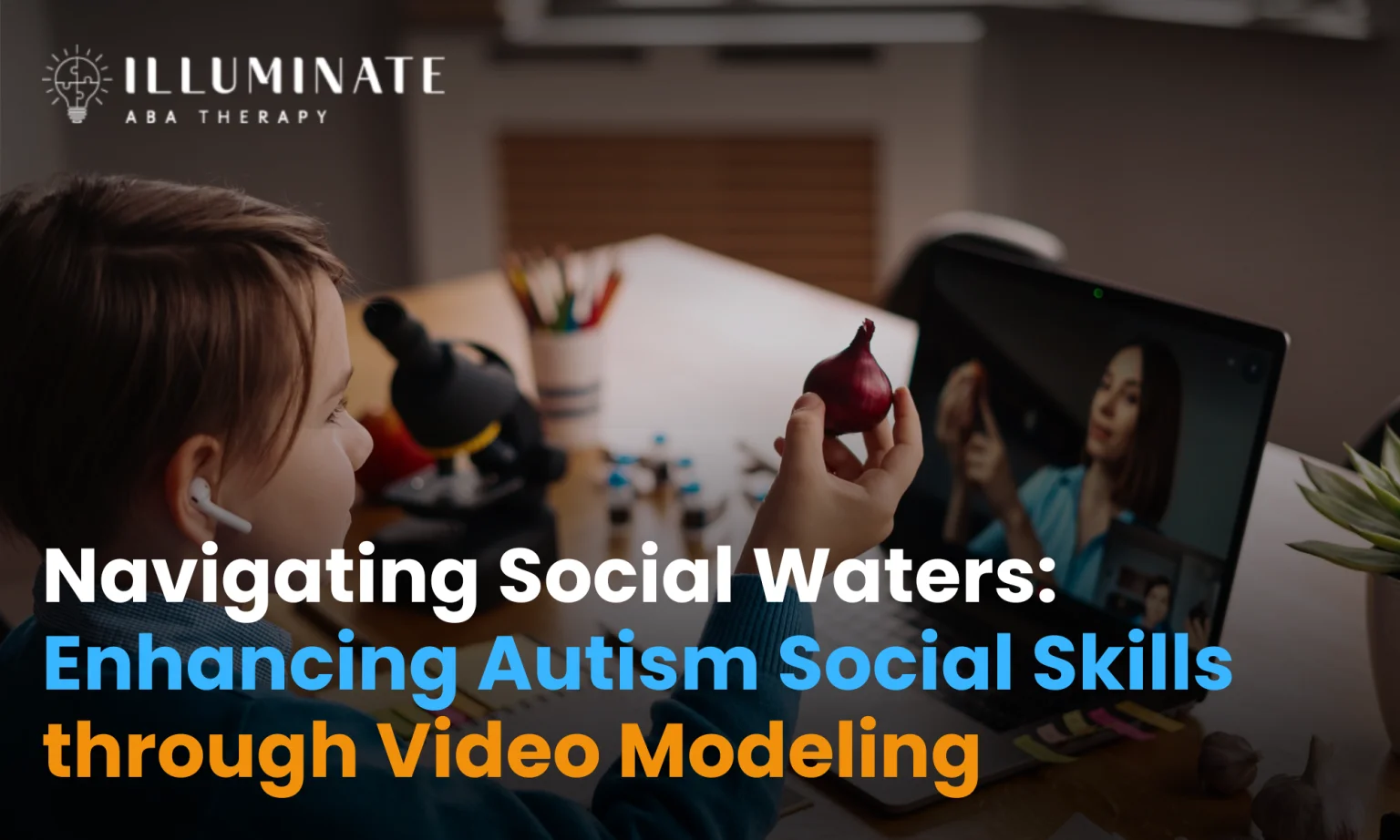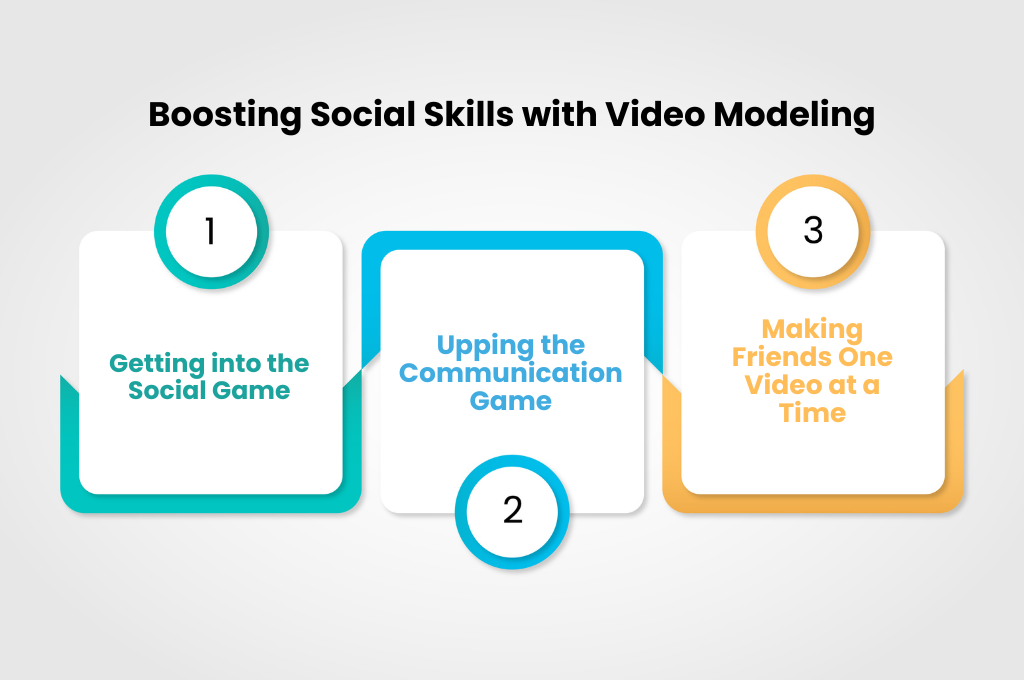Navigating Social Waters: Enhancing Autism Social Skills through Video Modeling
ABA TherapyJuly 17, 2025

ABA Therapy for Autism
Applied Behavior Analysis (ABA) is a popular therapeutic method for folks with Autism Spectrum Disorder (ASD), focusing on flipping behaviors and building skills. Getting a grip on ABA programs and what they bring to the table can make a real difference in the lives of individuals with autism.
Understanding ABA Programs and Support
ABA programs are all about interventions rooted in behavior analysis, aimed at boosting good behaviors and cutting down on the not-so-great ones. ABA therapists, fancy as Behavior Analysts, come up with custom treatment plans structured on deep dives into what the individual needs and is good at.
The help you get from ABA programs covers quite a bit—like discrete trial teaching, pivotal response training, and naturalistic teaching tactics. They aim to polish communication, improve social skills, give academic performance a push, and help with everyday living for those with autism.
Importance of Social Skill Development in Autism
Nailing down social skills is super important for the well-being and quality of life for those with autism. ABA therapy zeroes in on sharpening those skills because they're key to creating meaningful bonds, bettering communication, and tackling social situations.
People with autism might struggle with getting social cues, reading emotions, and having back-and-forth chats. ABA programs tackle these hurdles using organized interventions to teach social skills individually and systematically.
With social skill development being a big part of ABA, individuals with autism can pick up vital social behaviors, get better at making connections, and fit right in social settings. ABA's focus on social skill-building seeks to give folks with autism the courage and success they need to do well socially.
When we talk about how ABA therapy affects social skills in autism, it’s important to recognize the punch packed by evidence-backed methods like video modeling in beefing up social interactions and communication. Through targeted help and personalized care, ABA programs offer folks with autism priceless ways to grow and blend into society successfully.
Video Modeling for Social Skills
Checking out how video modeling spruces up social skills in folks with autism offers valuable insights into ABA therapy's toolkit. It's like giving a friendly nudge to pick up everyday social moves. Now, let's break down how video modeling plays a part in boosting social know-how for those on the autism spectrum.
What is Video Modeling?
Picture this: you're showing someone a video that plays out the gold standard of social moves. These clips can feature how people chat, give a high-five, or respond when a friend shares a joke. By seeing these interactions, individuals with autism get a sneak peek into the right kind of gestures and expressions for different social setups.
When someone with autism watches the actions in these videos, it’s a bit like getting a backstage pass to understanding social cues, facial expressions, and gestures. This method taps into the visual learning strengths commonly found in people with autism, which can make picking up new skills a bit more straightforward.
How Video Modeling Aids in Enhancing Social Skills
In the ABA therapy scene, video modeling is like a secret sauce for improving social skills. The videos work like a mirror, reflecting natural social behaviors that someone with autism can mimic in real life. They might find starting a chat or catching a wink from a buddy a whole lot easier after watching.
Plus, video modeling lays out a repetitive and structured path for learning, letting folks with autism replay and practice these social tidbits in a safe way. The more someone watches and practices what’s in those videos, the more it builds the confidence to roll with social gatherings and interactions smoothly.
Research shows that this video trickery can bump up communication and social interaction chops among individuals with autism, and even help in forming friendships. Integrating video modeling into ABA routines gives therapists and educators another tool to boost social ability, helping their clients become social butterflies when they might've been wallflowers before.
Grabbing the power of video modeling can really set the stage for positive social changes in someone’s life. By embracing this visual learning aspect, individuals get the hang of essential social skills, letting them shine in all sorts of social get-togethers.
Implementing Video Modeling in Autism
If you're looking to use video modeling to boost social skills in individuals with autism, getting the basics right is super important. Knowing the steps involved and the perks it brings can make a big difference in how these skills develop.
Steps for Using Video Modeling
Getting into video modeling isn't just hitting play on a video; it's about being organized to get real results. Here's a simple roadmap to blend video modeling into daily routines:
Steps for Video Modeling in Autism
- Pick the Right Flicks: Choose videos that show the social moves and interactions needed, matching the person's age and what they need most.
- Watch & Learn: Sit with them and watch the screen, pointing out those social tricks shown in the video.
- Copy & Try: Encourage them to imitate what they saw and try these moves in real-life situations.
- Feedback Time: Give them a pat on the back or a gentle nudge to help reinforce those positive moves and keep them going.
- Spread the Skills: Help them use what they've learned from the videos in new settings and situations, so the skills really stick.
Sticking to these steps helps people with autism really dig into video modeling, making social interactions easier and more natural.
Benefits of Video Modeling for Autism
When you dig into ABA therapy, you've gotta face some nasty debates about this treatment. Yeah, there are different views and lots of chatter around how it's done right and staying ethical.
- See & Remember: Watching videos makes social cues easier to understand and stick in the memory
- Custom Fits: Videos can be made to fit exactly what social skills someone might be missing, giving them the help they need.
- Keeping Interest: The lively, moving nature of videos grabs their attention, making learning more engaging.
- Boosting Confidence: Seeing positive outcomes in videos can inspire motivation and confidence in real situations.
- Taking Skills Everywhere: Social skills learned from videos can translate into different settings, enhancing flexibility.
By tapping into these benefits, those with autism can sharpen their social skills, build stronger relationships, and handle social crowds with ease and grace.
Boosting Social Skills with Video Modeling

Hooking into the power of video modeling to boost social skills in folks with autism has shown quite the promise for sparking up social mingling, pepping up communication, and making new pals.
Getting into the Social Game
With video modeling, those with autism can get a front-row seat to see what's what in social settings. Watching clips of folks greeting each other, taking their fair turn, or sharing not only gives a handy insider scoop on acting these out but helps them roll smoother in the social scene too. This "see it to be it" method helps demystify social vibes and makes interactions less tricky.
Upping the Communication Game
When it comes to sharpening up chatting chops, video modeling is a real game-changer. Watching videos that demo nifty tricks like keeping eye contact, using hand signals, and having a good old chinwag can make anyone a pro at chatting. This nifty visual guide boosts both talking and the unspoken ways of communicating, turning every interaction into a potential bonding moment.
Making Friends One Video at a Time
Video modeling doesn't just stop at improving social skills—it’s paving a way to real friendships, too! By soaking in positive interactions and getting the hang of the do's and don'ts in the social dance, people with autism can pick up on how to kickstart and keep up friendships with everyone from buddies and folks to strangers. These videos lay down the how-to’s for reading social clues, showing emotions, and feeling someone else’s shoes—in other words, nailing what it takes to build and cherish bonds.
Weaving in video modeling into social skills programs means folks with autism can pick up on and stick with social know-how. With its snapshot-style learning, video modeling turns learning into a fun visual journey, making it relatable and friendly for them. Curious about how other therapies like music can lend a hand? Check out our piece on the impact of music therapy on children with autism.
